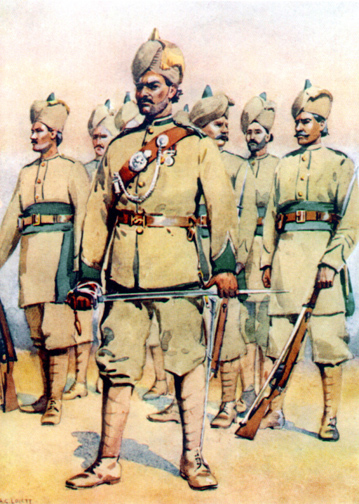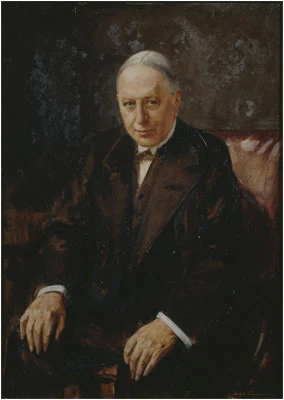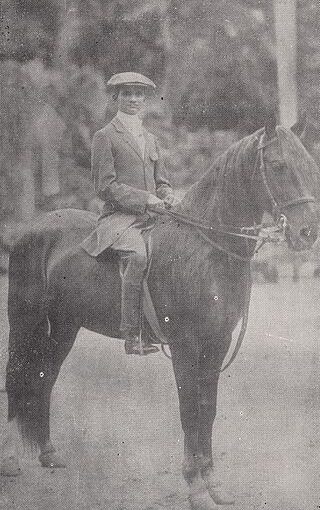By P.K.Balachandran/Sunday Observer
Colombo, December 17: Earlier this week, the Sri Lankan cabinet decided to investigate the execution of a young Ceylonese entrepreneur Duenuge Edward Henry Pedris 108 years ago by the British for a crime he did not commit.
Pedris was sent to death by a firing squad for “attempted murder.” The shots that he fired in self-defence into a mob that was converging on his shop in Pettah, had only injured a policeman. No one was killed.
Pedris, then only 27, was executed by an army firing squad in Welikade prison on July 7, 1915. The unconscionable execution was part of the widespread repression the British rulers resorted to in order to control the Buddhist-Muslim riots which they suspected were part of a sinister scheme to overthrow them.
Pedris was executed primarily to set an example to those among the newly-emerging Sinhalese-Buddhist elite who had developed a sense of cultural and religious nationalism with a political undertone. However, contrary to the expectation of the British, Pedris’ brutal execution did not frighten the emerging Ceylonese political elite but only spurred them on.
Independent Ceylon remembered the young martyr by naming places after him and issuing a postage stamp in his honor. But the indefensibility of the British decision to execute him was not fully gone into and publicised. This lacuna will now be filled by a three-member cabinet-appointed investigating committee chaired by Anil Gunarathna, a retired Supreme Court Judge.
Shooting and Riots
Pedris was from one of the richest families in Ceylon. And like his class, was by no means anti-British. In fact, he was a member of the Colombo ‘Town Guard’, a force raised by the government to help the police in emergencies.
The Sinhala-Muslim riots had started in Kandy at the end of May 1915, and had spread to Colombo. It wreaked havoc in Pettah, the town’s main market. On 1 June, when Pedris was at his shop on Main Street Pettah, a Muslim mob, incensed by the destruction of their shops, was seen advancing towards his shop. Pedris came out, whipped out a gun and fired six shots into the crowd. One of the bullets hit police constable Seneviratne in the head. Seneviratne survived, but the charge of attempted murder was slapped on Pedris.
The police raided his house and seized a cache of arms and ammunition. He was produced before a Court Martial, and sentenced to death. The sentence, grossly out of proportion to the crime, was handed down despite contradictory evidence about the time at which the shooting took place. Further, the trial was held under Martial Law even though the shooting had taken place before Martial Law was imposed.
Appeals for clemency to the Governor Sir Robert Chalmers from the highest personages in Ceylon fell on deaf ears. Chalmers and the Inspector General of Police, Herbert Layard Dowbiggin, wanted to make Pedris’ swift execution a lesson for the other ‘ringleaders’ of the ‘anti-British’ movement such as D.S. Senanayake, F.R.Senanayake, D.B.Jayatilaka, Dr.W.A.de Silva and Dr. C.A. Hewavitharana. Like Pedris, these members of the emerging Ceylonese elite were striving to foster a new cultural nationalism based on Sinhala-Buddhist ideals. They were among 86 leading lights of the anti-drink ‘Temperance Movement’ who were imprisoned in Welikade for ‘waging war against the King’ and abetting the riots against ‘His Majesty’s Moorish (Muslim) subjects.’
Execution
On the day of the execution, at 7.30 a.m., the man in charge, Additional District Judge Arthur Charles Allnut, an Oxford University graduate and a member of the Ceylon Civil Service, lined up the 86 Sinhala-Buddhist notables in the verandah outside L-Hall in Welikade Prison, so that they could watch Pedris walk to his death.
According to Jayasena Dahanayaka, author of Deshabandhu F.R. Senanayake (Vijitha Yapa, 2011), Pedris, dressed in his Town Guard uniform, marched with his head held high and chest forward. At the site of the execution, behind the jail, Pedris was made to sit on a chair. He had just one request to make: he wanted to be shot, not by Christian or European soldiers, but by Asians. Allnut agreed and ordered the men of the 28th Battalion of the Punjab Regiment, which had been brought from India to help quell the riots, to carry out the sentence. Pedris faced the Punjabis fearlessly, rejecting a blindfold offered to him.

Sharp at 8 a.m. gunshots rang, signalling the end of the young man. Twenty minutes later, Allnut arrived at L-Hall with a posse of prison staff carrying the blood splattered chair on which Pedris had died. Showing the chair to the Ceylonese leaders lined up there, Allnut declared: “ Any person who commits an act of treason against the government by forming organizations like the so-called Anti-liquor Movement, will have to die facing such a fate as this.”
An infuriated F.R.Senanayake shot back : “Are you such a cowardly and timid nation to shoot one of our young men and bring the chair splashed with his blood? Aren’t you ashamed to parade the results of your foolish and stupid act to us when we are sorrowing at the demise of one of our people? Each drop of blood of this young man Pedris, who I treat as one of my own, should be considered as sacrificed in the name of the nation. If the stream of blood wetting that chair is counted in drops of blood, the British will definitely have to pay compensation.”
The killing of Pedris and the liberal use of the charge of treason in dealing with rioters and suspected instigators made the British very unpopular among the politically conscious sections of Ceylon. Even the British lawyer, Eardley Norton, dubbed this tendency as ‘Treasonitis’, a new disease afflicting Colonial Establishments all over the world.
Edmund Hewavitharana, brother of Buddhist revivalist Don David Hewavitharana (who later became Anagarika Dharmapala) was sentenced to ‘penal servitude’ for inciting a mob to attack ‘Chrystal Palace’ a huge Muslim emporium on Keyzer Street, Pettah. Constable Senanayake was sentenced to death for extorting money and jewellery from a Muslim businessman.
Punishments out of proportion to the crime, such as these, eventually turned the leaders of the social reformist ‘Temperance Movement’ into national political leaders demanding self-rule, albeit in a non-violent, gradualist and constitutional ways. Their efforts culminated in the British withdrawing from Ceylon and D.S. Senanayake becoming independent Ceylon’s first Prime Minister in 1948.
Reasons for excesses
There were several reasons why the British used excessive force to quell the riots. The basic reason was a lack of understanding of what was happening in the socio-cultural, political and economic life of the Ceylonese.
A.C.Dep, the author of Ceylon Police and Sinhala-Muslim Riots of 1915, says that the relationship between the British rulers and the people of Ceylon had been as distant in 1915 as it was during the Matale rebellion in 1848 and the Uva uprising in 1818. Very few of the British administrators knew the local languages and customs, though, ironically, the Governor of Ceylon in 1915 was Sir Robert Chalmers, a well-known scholar in Buddhism with academic papers to his credit.
But Chalmers was a bad administrator. Sir Ponnambalam Ramanathan, who had taken up the cause of the Buddhists and was also close to Chalmers, tried to meet him and persuade him to see the riots in the right perspective, but Chalmers would not see him. Some of Chalmers’ paranoia could be explained by the fact that he had just lost two sons in World War I which was then raging in Europe.
The Inspector General of Police, Herbet Layard Dowbiggin, also showed lack of understanding despite the fact that he came from a family with a long connection with Ceylon. His father was Rev. R.T. Dowbiggin, was a Sinhala scholar who had translated the bible into Sinhala, and taught Christianity to none other than Anagarika Dharmapala, the Sinhala-Buddhist nationalist.
Dowbiggin was a hardworking officer, but he tended to be untrusting in his approach and impetuous in action. The then Army commander Brig. Gen. H.H.L.Malcolm was of the same kind.
According to A.C.Dep, the Governor did not bother to find out from the newly emerging elite, including the Mudaliyars and Muhandirams appointed by them, what was meant by the Sinhala-Buddhist “National Movement and National Day,” whether it had any political content. The new elite had also made no attempts to engage the government. They passively looked on as the riots spread, giving the British the impression that they were the behind the scenes instigators.

Crucial Letter
Chalmers and Dowbiggin went by a letter written by a nephew of Ven. Hikkaduwa Sumangala Thera in 1914, which happened to fall into their hands.
The letter said: “Advantage should be taken of the present opportunity to obtain our freedom from the manifold hardships we have to put up with at the hands of the heathen and coast Moorman and the Moors of Ceylon, as our object in view can be obtained as the English are at present hampered owing to the war, and because the opposing enemy will render us assistance. That the century of the British occupation of Kandy will be completed on the 2nd of March, 1915, it is the object of our association to take steps to cause rebellion in all the provinces and take possession of Kandy on that day itself.”
Army’s Induction
Since the Ceylon Police were understaffed (According to police historian A.C. Dep, there were only 2600 men in the force and these had to man 132 police stations across the island), troops had to be requisitioned from India. About 300 Indian troops of the 28th Battalion of the Punjab Regiment led by Lt.Col. Chichester were inducted.
With the imposition of Martial Law on 2 June, the police, army and volunteer corps especially the planters’ brigade, went berserk. Shoot at sight orders were issued. Miscarriage of justice took place on large scale.
END
The post Rendering justice to martyr Edward Henry Pedris appeared first on NewsIn.Asia.




